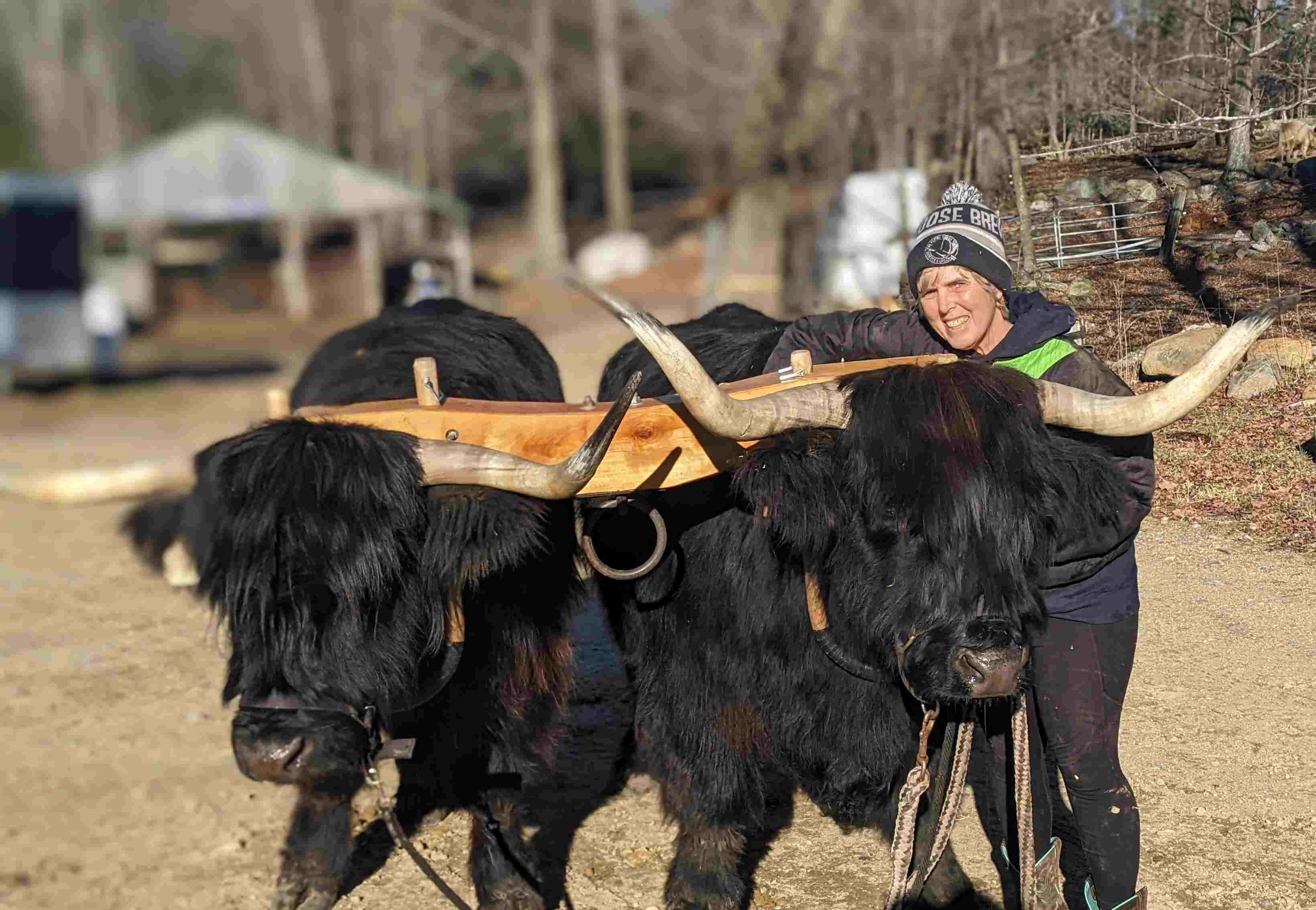When is the best time to train a bull? Now!
posted on
July 13, 2024
Training Mason, my new bull, is on my schedule. Training a sixteen-month-old bull is much like training a calf, except a bit more dramatic.

Coach Carole: Happiness is a choice. For every minute you're angry, you lose 60 seconds of happiness.
“Well, that wasn’t in today’s schedule,” I said to husband Bruce as he climbed out of the cab of the Mahindra tractor. The huge tractor tires were stuck hub-deep in tire-sucking muck that wouldn’t let go.
It was a recent Sunday, and the day’s schedule we had agreed on was clear:
- Walk dogs.
- Feed cattle.
- Eat a breakfast of pancakes smothered in maple syrup and fruit.
- Train the new bull.
But then Bruce changed the plan. He decided that while delivering hay, he’d get the tractor stuck.
Yes, I know I’m being hard on Bruce, but he’s the first one to complain when I change one of our daily schedules. Of course, schedules have to change with the circumstances, but I can complain, can’t I? We abandoned the mired tractor – the cattle didn’t mind since they could get to the hay -- and moved on to #3 – Sunday breakfast.
Generally, we wouldn’t have to deliver expensive hay bales to the cattle at this time of year. They’d all be munching lush green pasture grass, but I had separated a small group of cattle for “supervised” feeding. The group included two pregnant cows, Hope and Kavi, who had passed their due dates and were pastured nearby. When they give birth, they’ll be close to the barn if they need help. Those two girls are getting big, and I wouldn’t be surprised if the calves were born on the same day. The others in this group are calves destined to be “counselors” for our Cow Camp.
Bull Training
After breakfast, it was time to move on to #4, train the bull. Mason, a 14-month-old bull, was the fruit of a recent bovine-shopping spree. He’d never had a halter on, and when I tied his rope to the side of the holding pen, he bellowed, thrashed, and flew into the air as he fought the rope. This is the first step in bull training (or any cattle training: Letting them fight with the rope. Some cattle don’t fight much; others, like Mason, are real drama kings.
By the second day, he would quit fighting and let me rub his body from a safe distance with a long stick. After a few more sessions, he’d let me brush him. I’d brush him for about five minutes, then let him loose. Brushing simulates a cow licking her calf. Older cows lick their friends, and bulls lick cows to win their favor. It builds trust.
Short, frequent sessions are the key to training success. Bovines learn best in short bursts, with each five-minute session almost like starting over again. Within a week, 700-pound Mason would let me walk up to him, slip a halter over his head, and lead him around the barnyard.
To learn more about calf and bull training, watch this WMUR Chronicle video that Karen Meyers shot at the farm last week. Just Google: NH Chronicle How to train a calf.
Unplanned Rescue
The new item #5 on our list was to extract the tractor. Farm friend Terrance drove up with his tractor and winched the stuck Mahindra from its muddy parking spot.
That day, all the tasks on the schedule (even the unplanned ones) got done. What with the weather, livestock, human and mechanical frailty, etc., some days write us an entirely new schedule. Those days aren’t much fun, but they keep farm life interesting.
* * *
Carole Soule is the co-owner of Miles Smith Farm in Loudon, N.H. She raises and sells beef, pork, lamb, eggs, and other local products. She can be reached at carolesoule60@gmail.com.



